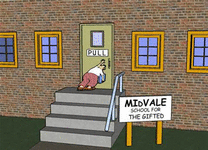|
Replies: 4
| visibility 940
|
All-TigerNet [10666]
TigerPulse: 100%
Posts: 10935
Joined: 8/20/07
|
Staying Ahead of the Collegiate Ruling - Schools have 3 Options
Oct 30, 2019, 9:19 AM
|
|
With the NCAA ruling and the future player payments coming, schools and conferences must stay proactive in their approach, otherwise they'll get left behind in an attrition battle with large schools with huge markets.
First, let's identify the "knowns" with collegiate athletics:
1. Players that would benefit from their 'likeness' being used (ie. Jersey sales, endorsements, etc.) are limited to a few, mostly men's, sports, and only a limited number of players on those teams. The women's golf team is rarely going to have the star that would make money worth talking about, much less basketball, softball, soccer, etc. The men's Olympic sports teams and non-revenue generating sports would be similar, without a true Olympian attending the University. That takes us to football and basketball, along with baseball trailing behind. Baseball players have the option to go pro right out of high school, and if they're the pro caliber that will turn heads and sell jerseys, they're likely enticed by the huge signing bonus - so they're not in college. For basketball, you're limited to 5-7 guys in the main rotation, and if they're really a star, they can leave college after one year. This takes us to football; 22 people on the field, plus a few kickers, and how many can the average fan even name, much less would be willing to purchase an item highlighting that player?The likeness needle isn't moving with the kickers, the interior players on offense, and most of the defense (you'll occasionally have a player worth noting on defense). The focus are the skill positions (QB, RB, WR) and an occasional defensive player. In summary, out of an entire Division 1 athletic department, we're talking less than 10-15 athletes that have the potential for real money-making ability for individual likeness.
2. Team-likeness is another potential market for players to make money. This captures things like video games and group-centered endorsements ("the Clemson football team flies Delta, because..."). This is where your non elite athletes are making the most money as the entire team is recognized. Probably not going to be an amount that changes their lifestyle, but definitely some food and beer money for school.
3. The last category is school/conference-mandated contracted efforts such as apparel, equipment, and TV markets. Now that players can be paid, this funding will have to somehow get to them. This category is going to keep people in the athletic adminstration world up at night. I'm not going to try to solve it now.
With those known sources of funding, schools have three real options ahead of them (if not directed by their conferences):
1. Individual-ran contracts. This requires players to find an agent and negotiate everything. Again, we're only talking 10-15 players max, but players with higher ceilings will reap bigger rewards, and the average athlete is left squabbling over scraps (with or without an agent representation).
2. Schools can take an active approach and force players to sign over their rights for an athletic likeness package for say, a single team or the entire athletic department. This allows everyone to make the same amount of money, enhances unity among the team or the school, and simplifies the entire problem. It also takes pressure off of individual players and allows them to enjoy their college experience (and they're paid the same whether they become a Heisman winner or a scout teamer).
3. Conferences can get a handle on the effort and simplify the approach as well. Take #2 listed above, but now with the conference handling this business. I would say this is the lease likely option that will play out.
My biggest worry is that average athletes will soon be penalized because of the 10-15 taking funding, whether it's reduced scholarships, taxes, or dissolving the non-revenue sports altogether.
|
|
|
|
 |
All-TigerNet [10859]
TigerPulse: 100%
Posts: 7646
Joined: 1/6/04
|
Re: Staying Ahead of the Collegiate Ruling - Schools have 3 Options
Oct 30, 2019, 9:35 AM
|
|
What's to keep agents for purchasing a high schools kid's "likeness" with a 10 year contract?
That carries him over to his NFL playing days. There would be some misses, but how many hits does it take to cover those misses?
|
|
|
|
|
 |
All-In [27374]
TigerPulse: 100%
Posts: 31825
Joined: 8/19/03
|
Re: Staying Ahead of the Collegiate Ruling - Schools have 3 Options
Oct 30, 2019, 10:39 AM
|
|
I doubt that a minor could enter into a contract with an agent that is binding.
|
|
|
|
|
 |
All-TigerNet [10666]
TigerPulse: 100%
Posts: 10935
Joined: 8/20/07
|
Re: Staying Ahead of the Collegiate Ruling - Schools have 3 Options
Oct 30, 2019, 10:45 AM
|
|
Major League 17-year olds sign them all the time, with their parents as co-signers.
|
|
|
|
|
 |
CU Medallion [65422]
TigerPulse: 100%
Posts: 33245
Joined: 12/3/03
|
I can't see the schools themselves actually getting into it.
Oct 30, 2019, 10:44 AM
|
|
If they did, Title IX would rear its head, and the money would have to be distributed equally among all players, all sports. This would not satisfy your star athletes, who it was meant to benefit. It is going to be a colossal mess. The NCAA has shown they are inept at the fair administration of rules they already have. What makes anyone think they will do a better job with this?
|
|
|
|
|
|
Replies: 4
| visibility 940
|
|
|



 to award
the award.
to award
the award.





